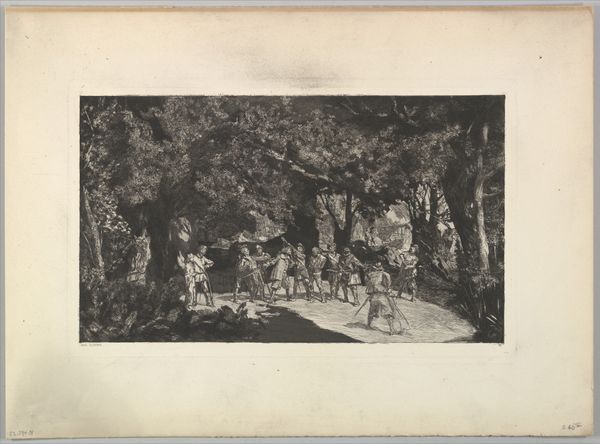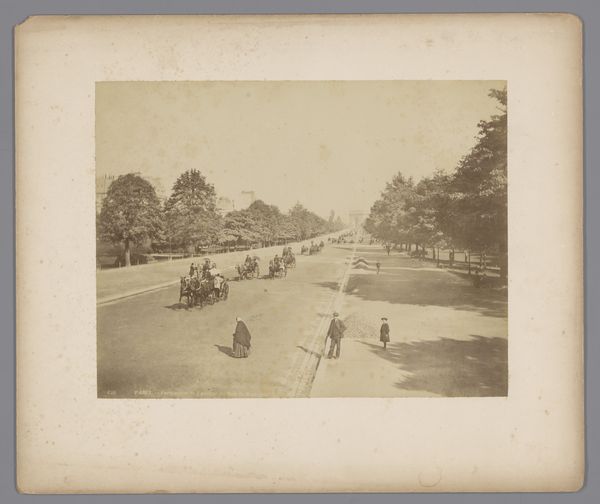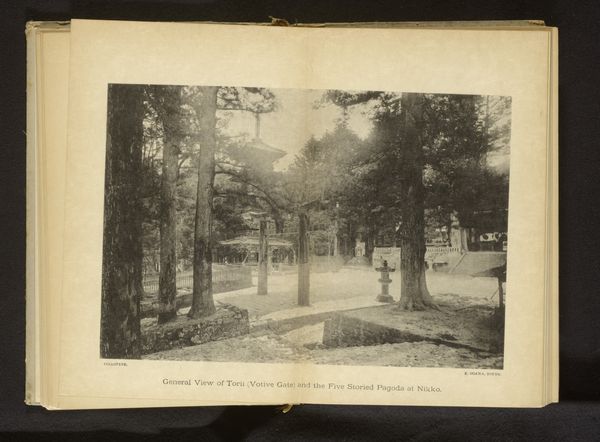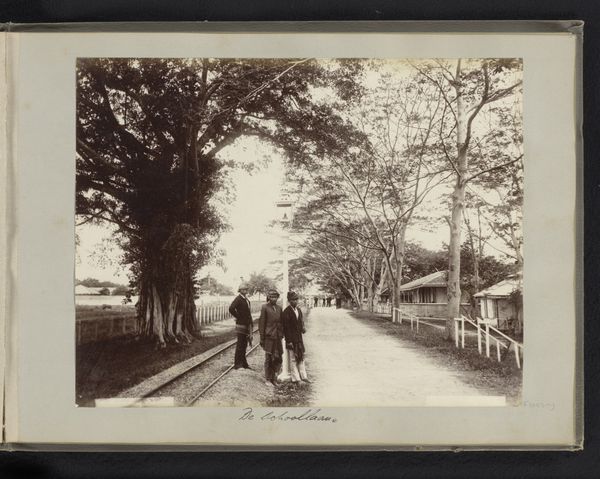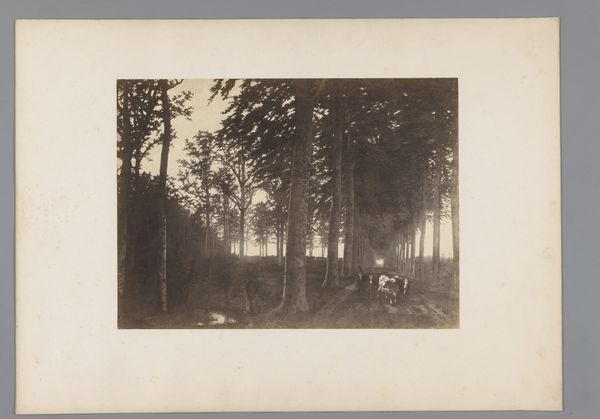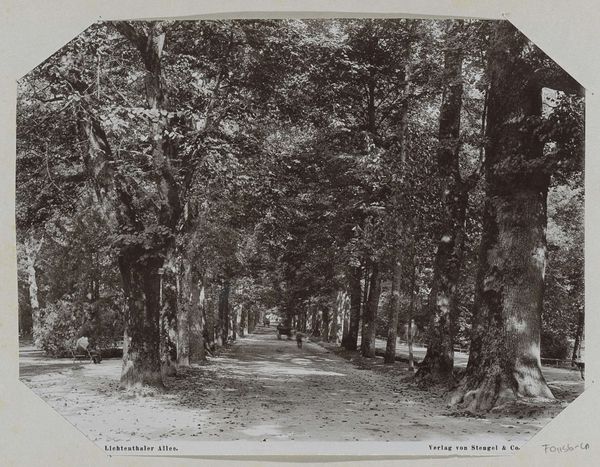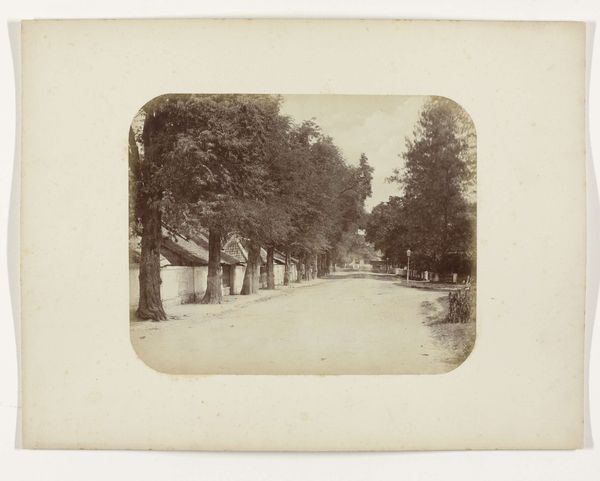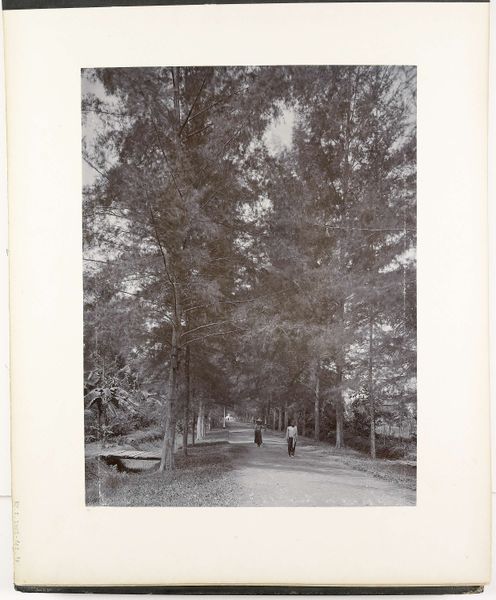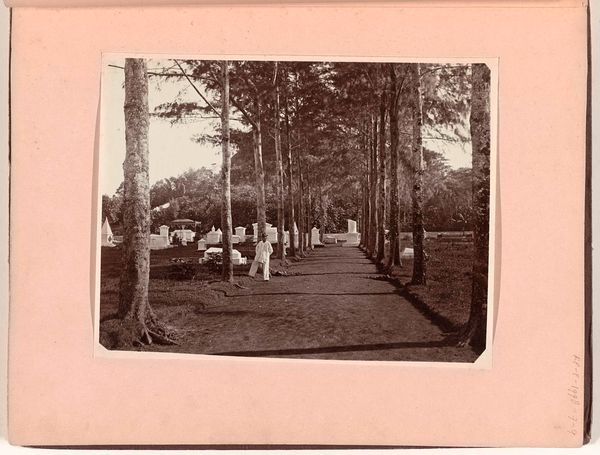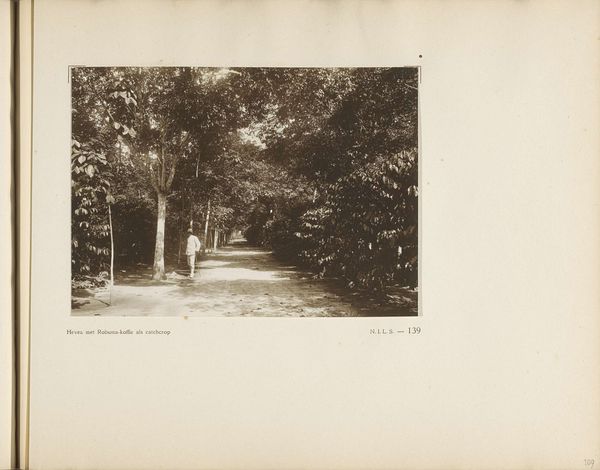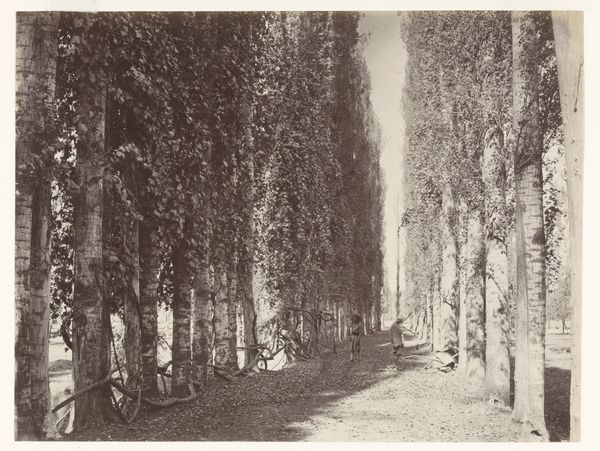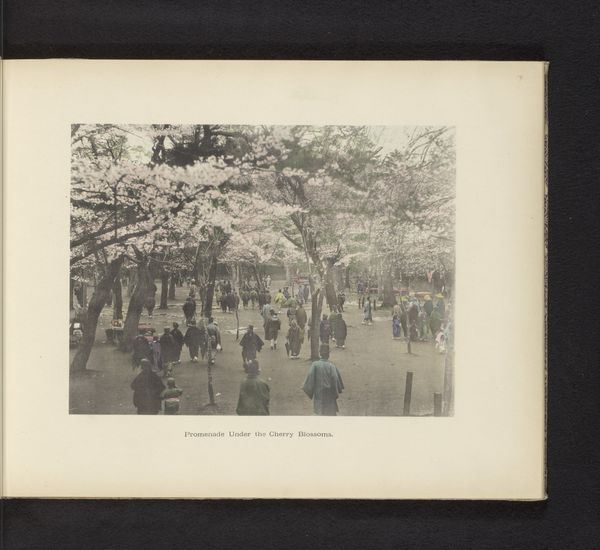
photography, gelatin-silver-print
#
landscape
#
photography
#
gelatin-silver-print
Dimensions: height 232 mm, width 291 mm, height 308 mm, width 416 mm
Copyright: Rijks Museum: Open Domain
Editor: We're looking at "Gezicht op de Tokaido langs de oostkust van Honshu," a gelatin silver print photograph taken by Felice Beato in 1865. It's striking how this image, supposedly documenting Japan, feels so constructed. It's like a stage setting, not a candid shot. What do you make of it? Curator: Indeed. The photograph is not merely a document, but a careful presentation. Beato, an Italian-British photographer, worked in a Japan that was rapidly opening to the West. His images, while seemingly objective, were consumed in the West, shaping and confirming existing notions of "the Orient," particularly through the lens of Japonisme. Editor: So it's not just a picture; it's contributing to a narrative? Curator: Exactly. Consider the figures posed along the road. They are deliberately placed, contributing to a romantic, and perhaps exoticized, vision of Japan, ready for Western consumption. Also, consider the rise of museum culture at this time; photographs like these ended up displayed to an European public eager to know more. It is part of how those collections were started and how Western culture positioned itself to others. How much does that construction influence how you see it? Editor: I see your point. I suppose I initially took it as a straight landscape image. Knowing that Beato catered to Western expectations changes my perception entirely. It becomes less about an actual place and more about an imagined one. Curator: Precisely. We need to consider how historical and socio-political forces affect the artist's production of imagery. Art exists within and contributes to a conversation that predates it. Now when you look at Beato, you will also think of the museum and its position in society. Editor: That makes perfect sense. I now see this photo not just as a view of Japan, but as a complex reflection of cross-cultural interactions and the power dynamics of the 19th century art world. Curator: I think understanding this will enhance our museum visit!
Comments
No comments
Be the first to comment and join the conversation on the ultimate creative platform.
